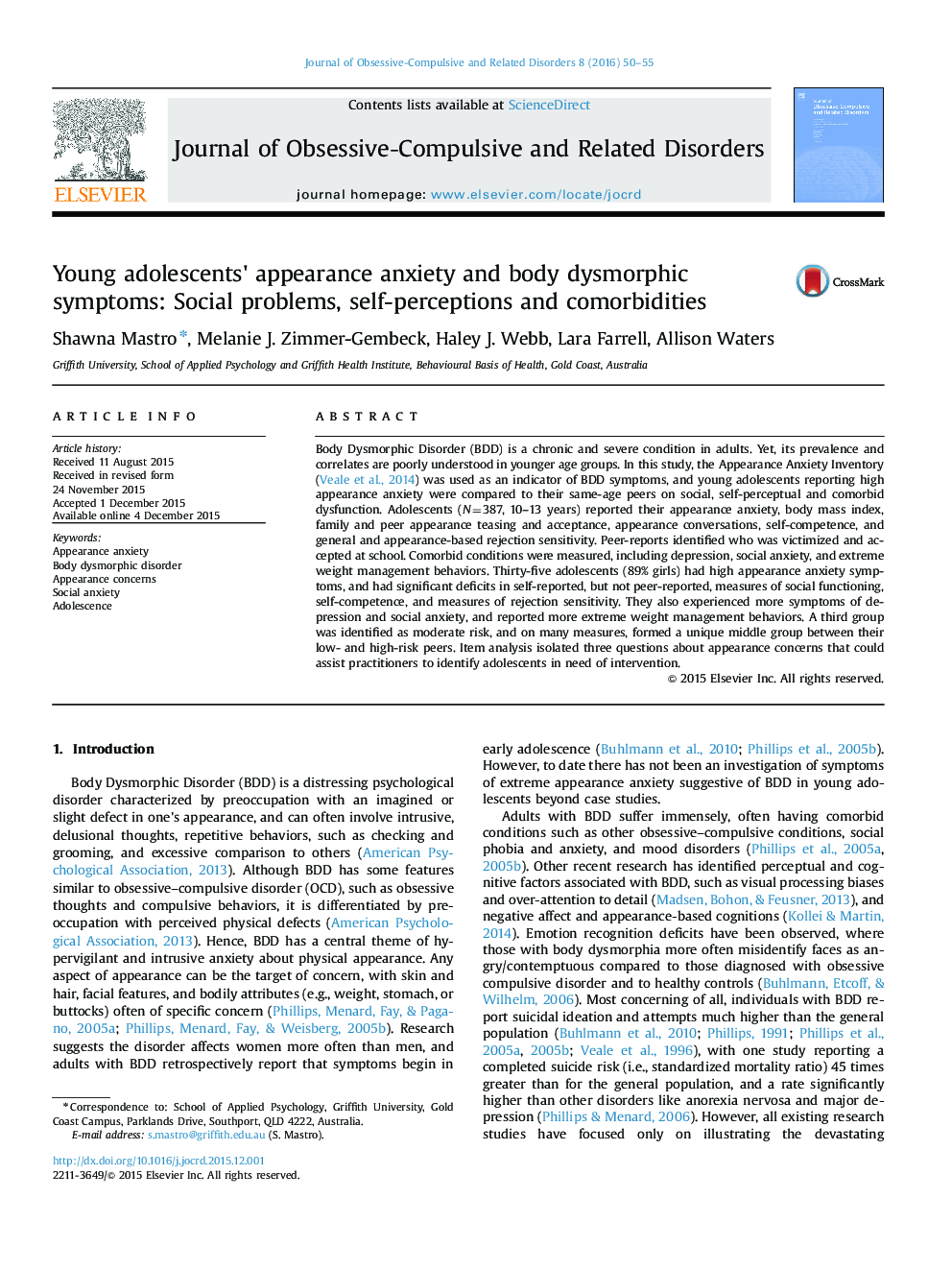| Article ID | Journal | Published Year | Pages | File Type |
|---|---|---|---|---|
| 7269166 | Journal of Obsessive-Compulsive and Related Disorders | 2016 | 6 Pages |
Abstract
Body Dysmorphic Disorder (BDD) is a chronic and severe condition in adults. Yet, its prevalence and correlates are poorly understood in younger age groups. In this study, the Appearance Anxiety Inventory (Veale et al., 2014) was used as an indicator of BDD symptoms, and young adolescents reporting high appearance anxiety were compared to their same-age peers on social, self-perceptual and comorbid dysfunction. Adolescents (N=387, 10-13 years) reported their appearance anxiety, body mass index, family and peer appearance teasing and acceptance, appearance conversations, self-competence, and general and appearance-based rejection sensitivity. Peer-reports identified who was victimized and accepted at school. Comorbid conditions were measured, including depression, social anxiety, and extreme weight management behaviors. Thirty-five adolescents (89% girls) had high appearance anxiety symptoms, and had significant deficits in self-reported, but not peer-reported, measures of social functioning, self-competence, and measures of rejection sensitivity. They also experienced more symptoms of depression and social anxiety, and reported more extreme weight management behaviors. A third group was identified as moderate risk, and on many measures, formed a unique middle group between their low- and high-risk peers. Item analysis isolated three questions about appearance concerns that could assist practitioners to identify adolescents in need of intervention.
Related Topics
Health Sciences
Medicine and Dentistry
Psychiatry and Mental Health
Authors
Shawna Mastro, Melanie J. Zimmer-Gembeck, Haley J. Webb, Lara Farrell, Allison Waters,
